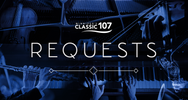What does it look like when a concert becomes more than the sum of its parts? In the late 15th and 16th centuries there was a widely held belief that when the audience and performers came together in concert they transcended their traditional roles.
Given Camerata Nova’s performance last night of the 16th century’s more avant garde works, I can understand where this belief gained its merit. The works of composers such as Gesualdo, Lasso, and Monteverdi acted as vehicles of a kind of musical mannerism. This delicate compositional style demanded both the vulnerability of the performer and the faith of the audience in order to provide a truly enchanting musical experience.
To say the least, I was enchanted by Camerata Nova’s concert on Saturday night, entitled ‘Where’s Gesualdo?’ The concert was more or less a tribute to the vocal ensemble’s roots in performing more ambiguous works of early music. The repertoire focused on Gesualdo and the enigma surrounding the dark dissonance of his style. The first half of the program featured works by Gesualdo and his contemporaries, Lasso and Monteverdi. The outstanding second half featured 20th C. music by Stravinsky, Part and Camerata Nova’s Andrew Balfour and Michael McKay.
Described as “a group without fear,” ‘Where’s Gesualdo’ certainly confirms the ensemble’s anomalous status. It also, however, goes beyond to insist the group’s potential legacy as practitioners of the power of the human voice. The sopranos, in particular, exhibited remarkable strength – their opening line in Gesualdo’s Ave Regina coelorum notably exhibited controlled breath and clarity. The style demands the utmost control from the voice in order to navigate the sparse textures and precarious harmonies – this is some of the toughest repertoire for vocal ensemble. You would hardly recognize the difficulty of the music, however, listening to the seamless movement of the ensemble’s voices, dancing through languid flowing lines and sighing melismas. The only break in the seam was in Stravinsky’s Pater Noster when a soprano was heard to slightly falter. This isn’t really a fair mention; I do so only to draw attention to the immense vocal demands of this music’s stylistic delicacy.
The dark enigma of the evening’s performance reached its consummation in the second half of the program. The first half was like an appetizer, or a mere shadow, of the second half which dropped us into a musical inferno. Andrew Balfour and Michael McKay achieved an outstanding feat of fearless composition and storytelling, focusing on Gesualdo’s inner torment and the musical trajectory of a compositional genius going mad. These were particularly arousing works, daring us to draw beauty from the hellish imagery conveyed in the aggressively chromatic harmonies and hypnotic chanting (“Have mercy!”). In the first movement of Balfour’s Cartoline da Venosa, the sustained dissonant harmony sung by the tenors notably evoked Gesualdo’s anguish.
With this level of harmonic experimentation, the audience cannot help but engage in the musical journey on stage. It is truly a journey because our musical expectations are of no use here; there is no telling what will happen in the next phrase. Christopher Jackson, Camerata Nova’s guest conductor, was certainly one of the chief practitioners of the seamless onstage story-telling. His lurid gestures were exciting to watch in and of themselves. The Montreal conductor was among the first to introduce early music to audiences in the 1970’s, and since then has gone on to have a world renowned musical career. Without him, I think it’s fair to assume this concert would not have been possible. That said, this was a performance that demanded the best from all involved parties – conductor, performers and audience alike. The price of an outstanding musical experience, however, is the sacrifice of one’s musical expectations. So today, when you all attend ‘Where’s Gesualdo’, leave these expectations at the church doors, and allow your musical experience to be something greater than you’ve ever imagined the sum of its parts could be.
Where's Gesuldo has it's second performance this afternoon at 3:00 PM at the Crescent Fort Rouge United Church in Winnipeg. For more information and tickets click HERE.
Sara Krahn is a freelance contributor for Classic 107. She is studying music at Canadian Mennonite University.








